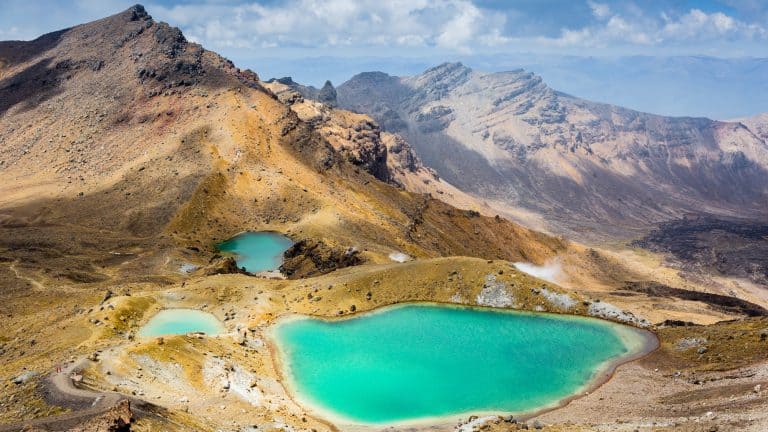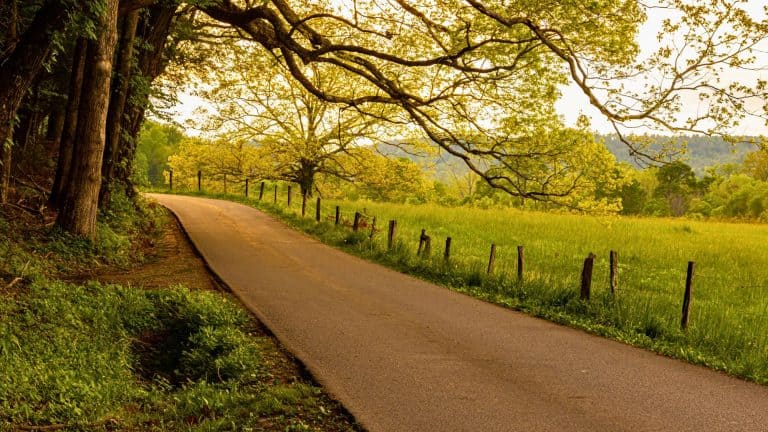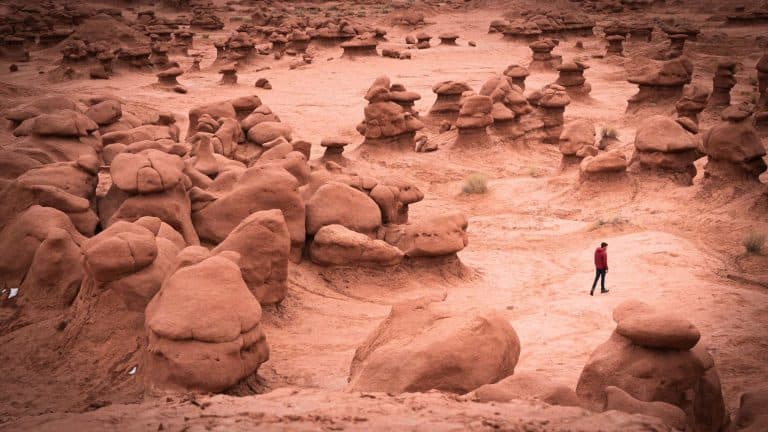Discover Parks & Wildlife contains affiliate links and is a member of the Amazon Services LLC Associates Program. If you make a purchase using one of the Amazon links (or other affiliate links), we may receive compensation at no extra cost to you. See our disclosure policy for more information.
Most Travelers Miss These 11 National Treasures In Florida, Don’t Be One Of Them
Florida is home to some of the most jaw-dropping parks and monuments this side of the planet. We’re talking about places so stunning they could make even the most jaded traveler gasp… unless they’re too busy complaining about the humidity.
From awe-inspiring landscapes to history so rich you could bottle it, this state has a knack for showing off in the best of ways. Sure, Florida might get a bad rap for its, shall we say, unique news headlines, but when it comes to sacred spots of beauty and culture, it pretty much nails the assignment.
So stick around and soak up some knowledge about these incredible NPS sites around the state.
Everglades National Park
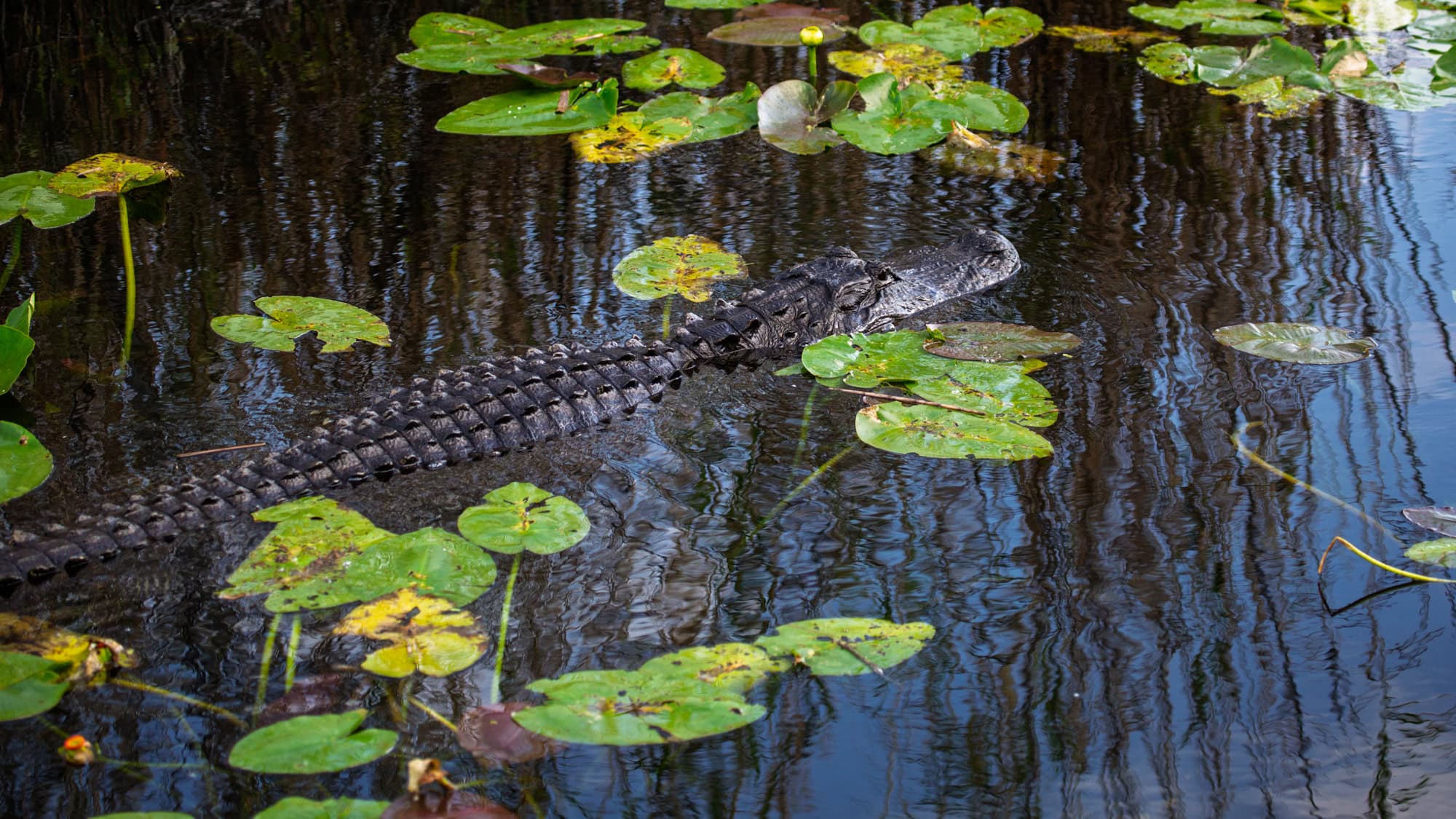
Where else can you find a swampy showdown between American alligators and American crocodiles? Nowhere but the Everglades, where they coexist like two grumpy roommates forced to share a bathroom.
And this sprawling wetland wonderland isn’t just a poster child for Florida’s wild side; it’s a UNESCO World Heritage site and an International Biosphere Reserve. Fancy, right? The park’s mix of freshwater and saltwater habitats creates the perfect conditions for these toothy reptiles to make themselves at home, along with manatees, panthers, and thousands of bird species adding to the guest list.
Tip for newbies here: don’t be the person who gets too close to “just snap a quick photo.” Trust me, the alligators have no patience for amateur paparazzi.
Biscayne National Park

Think Florida is all palm trees and sandy shores? Try snorkeling through Biscayne National Park’s underwater paradise instead. With 95% of the park below the surface, it’s like stepping into a real-life aquarium (assuming you step with flippers).
Coral reefs, shipwrecks, and schools of neon fish make it the ultimate backyard for marine life. And in case you were wondering, yes, it’s the largest marine park in the National Park System. Let’s face it, Floridians don’t do “small.”
Kayaking, sailing, and scuba adventures are practically required here, but the real winner might be the ancient shipwrecks you can explore. These aren’t your everyday sunken boats; they’re part of the Maritime Heritage Trail, because history’s cooler when it’s underwater.
Dry Tortugas National Park

Dry Tortugas National Park is proof that isolation can sometimes lead to pure architectural brilliance (or insanity, depending on how you look at it). Located about 70 miles off Key West, the star is Fort Jefferson, a massive masonry masterpiece built with 16 million bricks.
The fort once served as a prison during the Civil War, though I’m sure the stunning ocean views didn’t exactly soften the experience. Now it’s a snorkeling and bird-watching paradise because, again, Florida never settles for boring.
One minute you’re wandering through historic ruins, the next you’re swimming alongside sea turtles so effortlessly cool, they don’t even care you’re there.
Big Cypress National Preserve
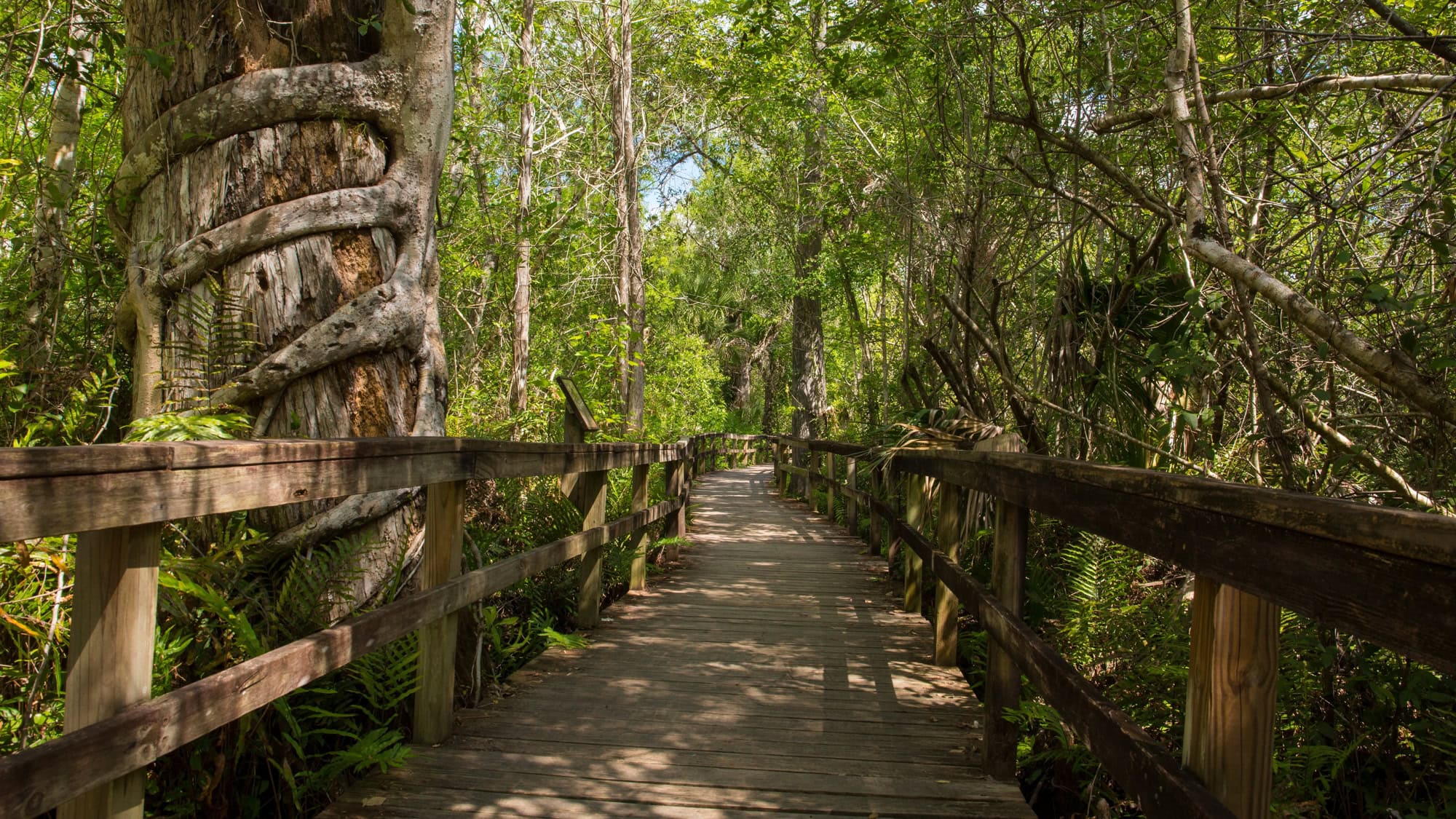
Big Cypress National Preserve is the Everglades’ slightly rebellious cousin; less famous, sure, but just as fascinating. It was designated as the first National Preserve in the U.S., so naturally, it has that “been-there-done-that” energy.
And this vast freshwater swamp acts as a lifeline for the neighboring Everglades, which basically means it’s the unsung environmental hero keeping Florida’s ecosystems afloat. Get ready for miles of cypress trees, orchids, alligator sightings, and, if you’re really lucky (or unlucky maybe), a glimpse of the elusive Florida panther.
Whether you’re hiking, swamp buggying, or cruising through on a scenic drive, it’s hard not to feel a little awe… and a lot of mosquito bites. Bring bug spray. Lots of it.
Canaveral National Seashore

Imagine 24 miles of pristine coastline where the real VIPs are sea turtles. Canaveral National Seashore isn’t just Florida’s longest stretch of undeveloped Atlantic beach; it’s also a maternity ward for loggerhead, green, and leatherback turtles.
These hardworking moms come here to bury their eggs, all while dodging raccoons and nosy seabirds. And while humans might get to enjoy the sun, sand, and waves, let’s be real, this is a turtle-centric venue.
You can also explore the dunes, lagoons, and ancient Native American shell mounds scattered about, which is a polite way of saying giant prehistoric trash piles. Try your hand at birdwatching, kayaking, or trying not to turn into a lobster under that blazing sun. Pack sunscreen, and maybe, just maybe, talk to a turtle.
Castillo De San Marcos National Monument
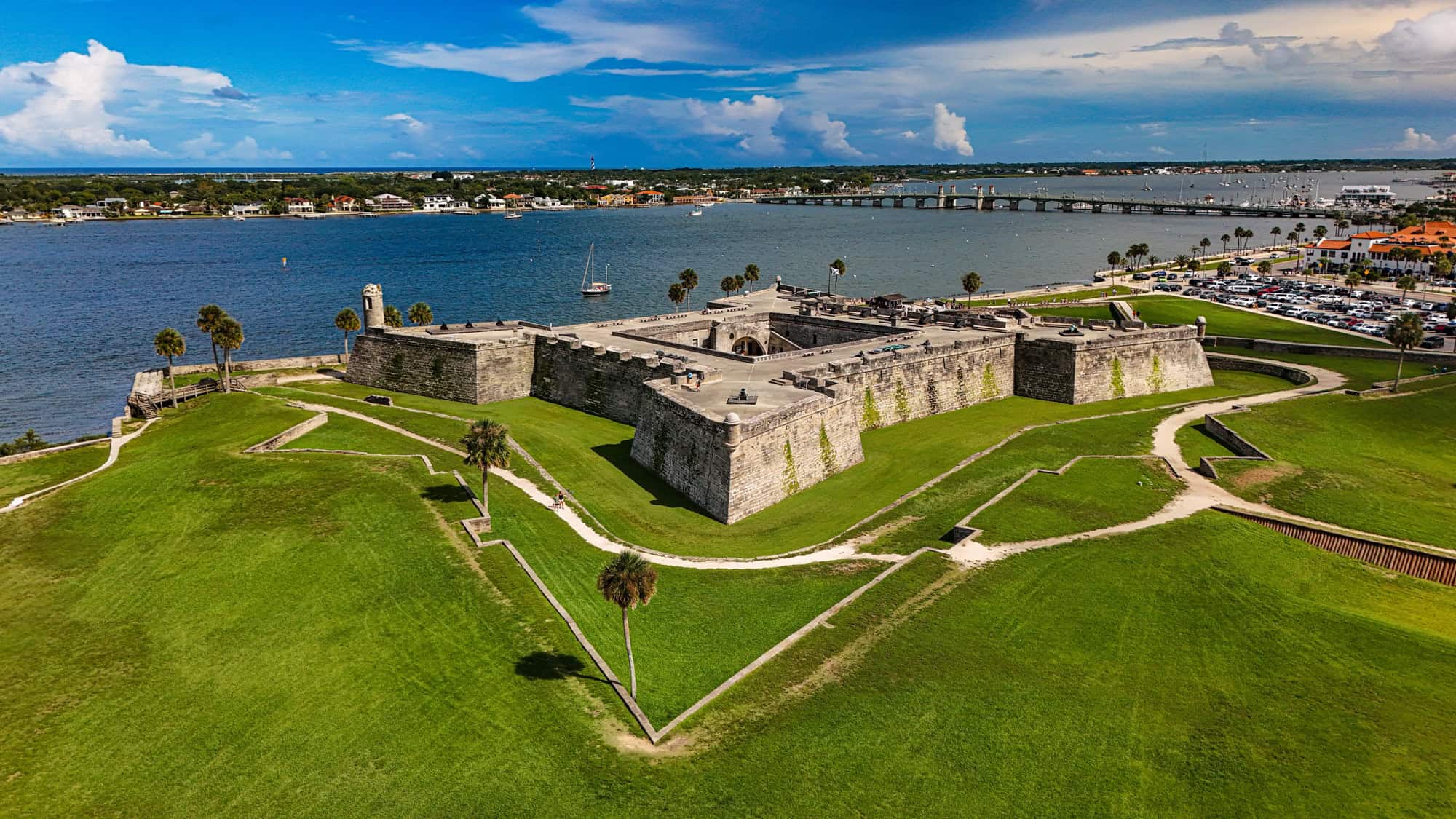
Built in the late 1600s, Castillo de San Marcos is St. Augustine’s answer to “Please stop blowing holes in my fortress.” The Spaniards, being resourceful, constructed the fort from coquina, a magical limestone made of seashells that absorbed enemy cannon fire like a sponge.
Countless British attacks later, the thing is still standing strong, making modern concrete look downright fragile. The fort is a maze of rooms, gun decks, and a spooky mood ideal for recreating your favorite pirate fantasies (you brought an eye patch, right?).
Make sure to climb up to the top for killer views of Matanzas Bay. But remember, back in the 1700s, this place wasn’t all fun and games… unless your idea of fun is surviving sieges while holed up in a stone igloo.
Fort Matanzas National Monument
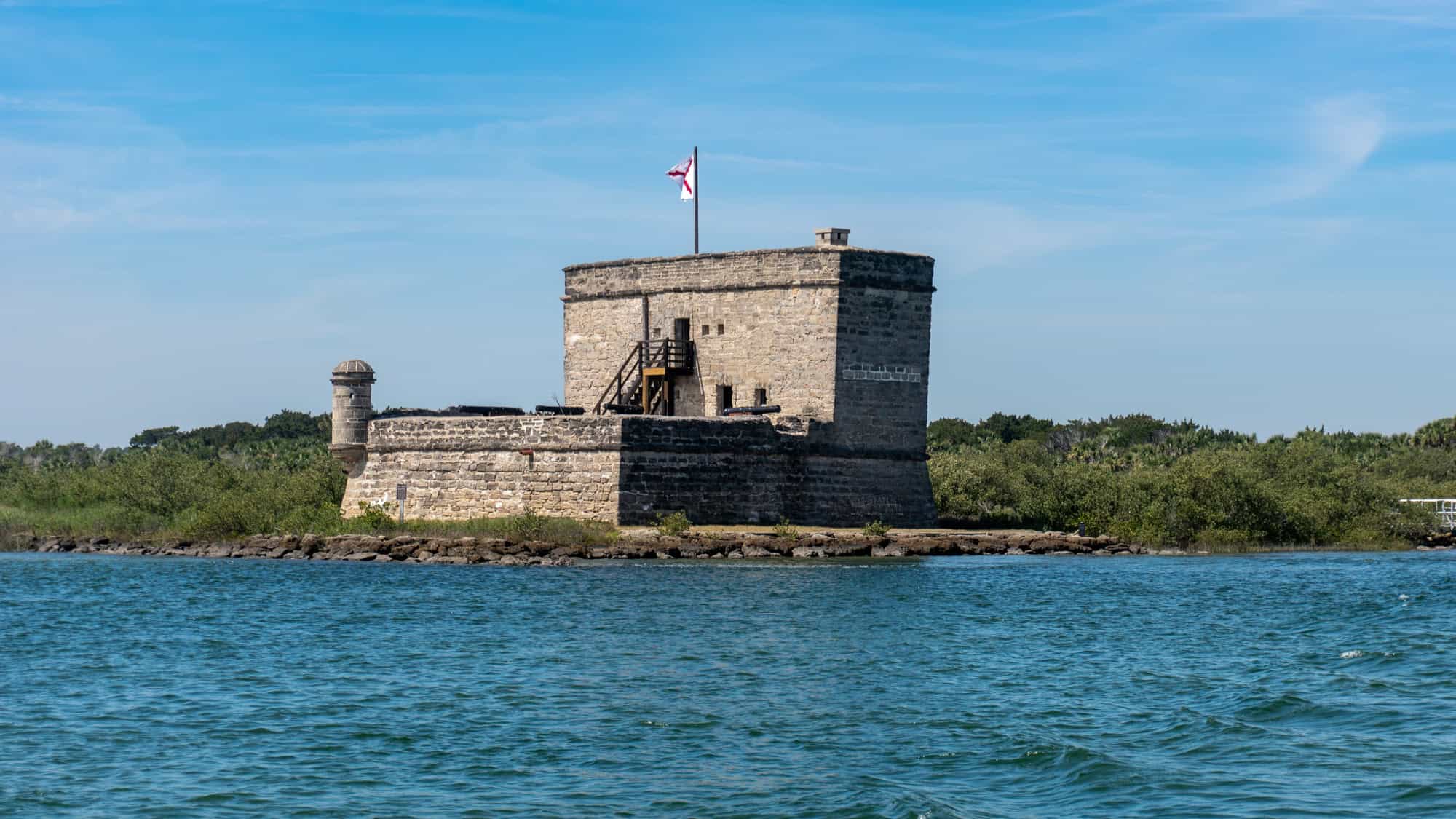
Fort Matanzas might look small, but this tiny tower guarded a whole lot of Florida drama back in 1742. The Spanish built it like a security camera for St. Augustine, keeping an eye out for those pesky British invaders.
Made of coquina like our last monument, the fort was both sturdy and stylish, proving that seashells make great walls when you’ve run out of bricks. Hop on a ferry to check it out up close, where rangers spill the tea about cannon firings and life in the 18th century.
Bonus? The surrounding marshlands are full of wildlife, from herons to dolphins. Just watch your step, it’s less fun to sightsee after tripping over a crab and twisting your ankle.
Gulf Islands National Seashore
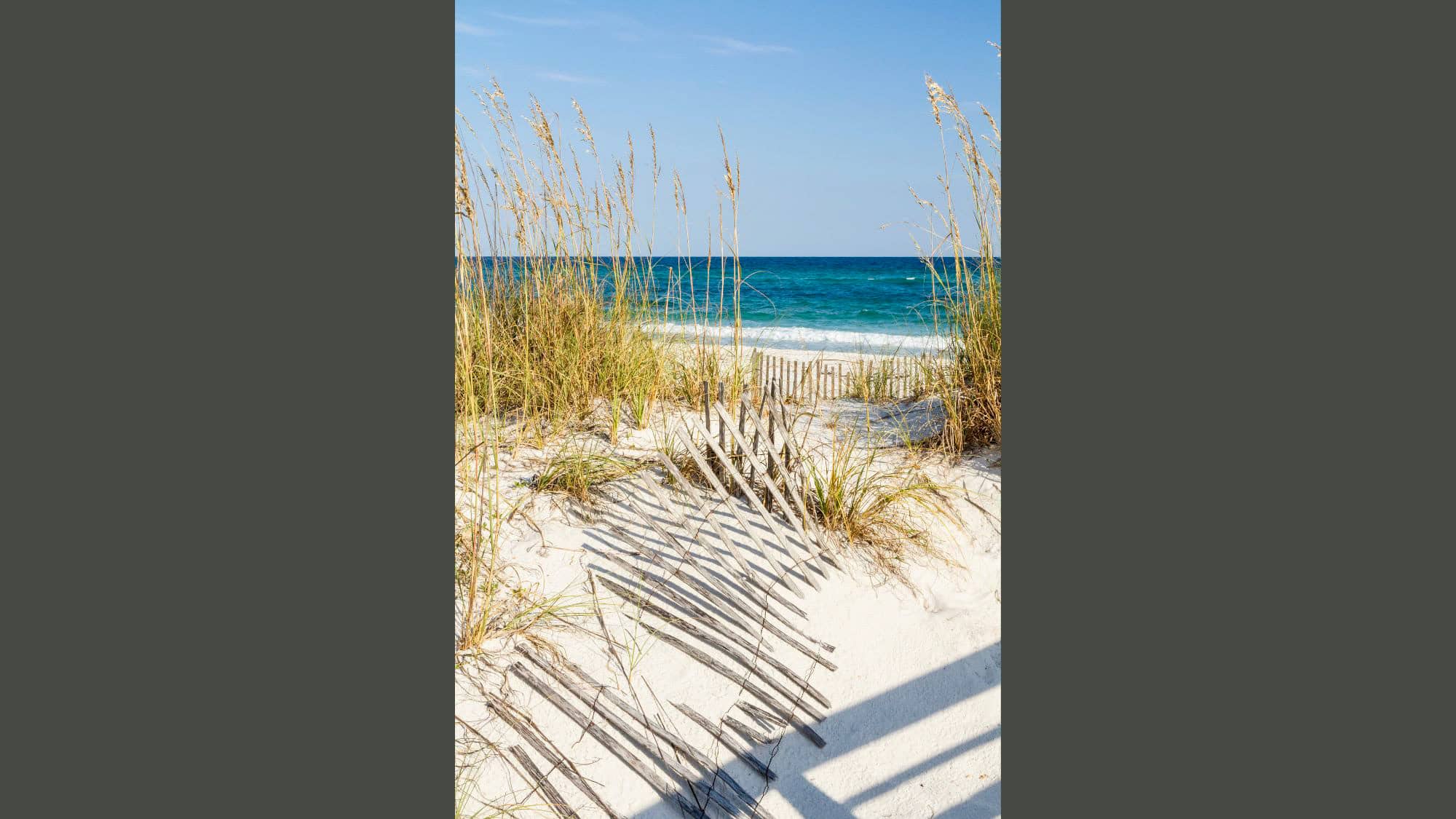
If your idea of a good time includes pristine beaches, rolling dunes, and wildlife casually judging your attempts to kayak, then Gulf Islands National Seashore is your spot. Spanning parts of Florida and Mississippi, this park manages to preserve coastal habitats so beautiful that it almost makes you forgive the mosquitoes. Almost.
The seashore isn’t just about nature, though; it also flaunts forts that survived everything from cannon volleys to questionable mid-19th-century hygiene practices. And between the sugary white sands and historic ruins, it’s the ultimate multitasking location for your brain and your sunscreen-slathered soul.
Just don’t be surprised if you find yourself squinting at the horizon, half-expecting a pirate ship to roll up and demand your watch and rings as booty.
De Soto National Memorial
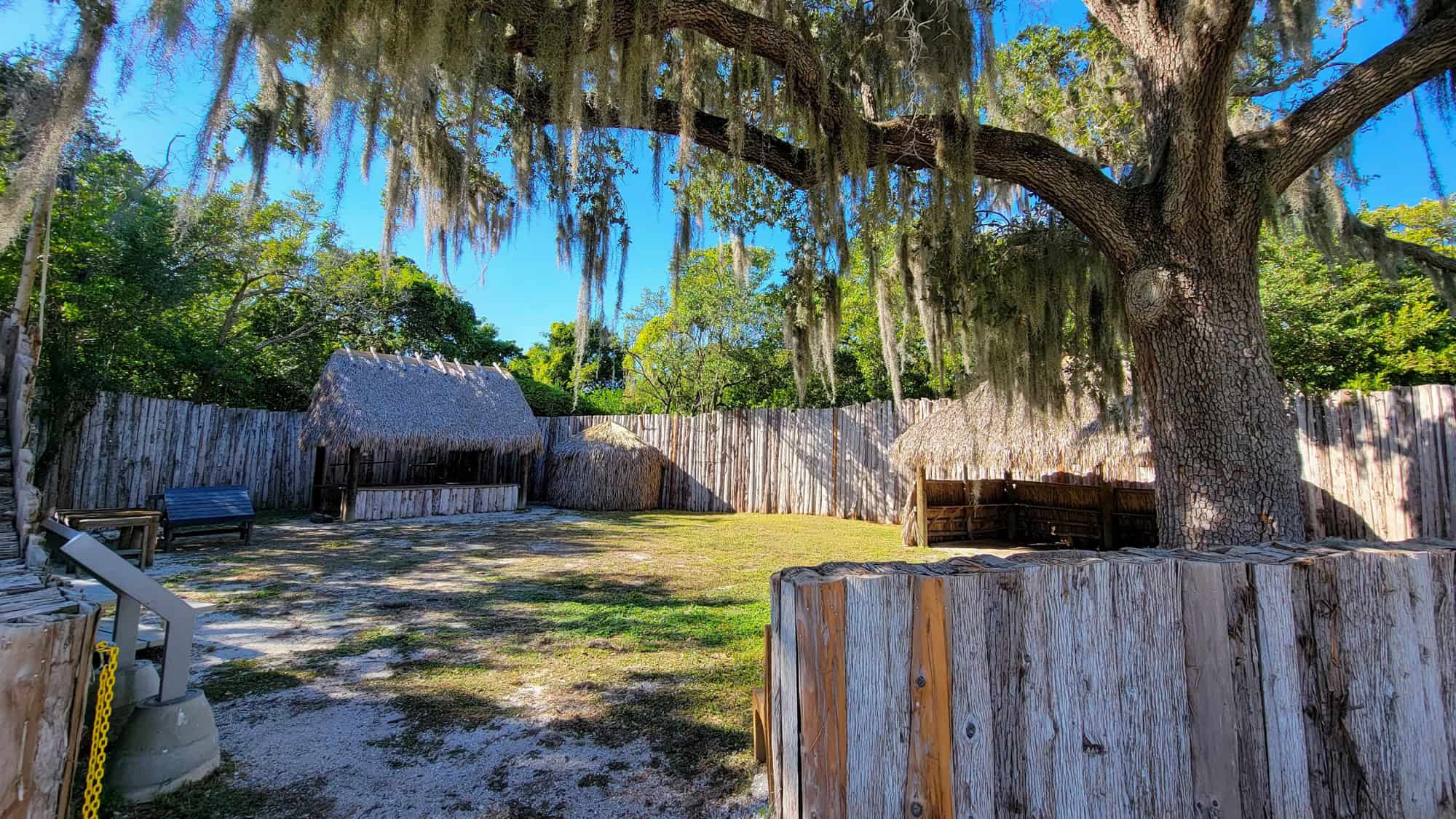
Hernando de Soto wasn’t exactly a charmer, but in 1539, he landed near Tampa Bay, leading one of the earliest (and arguably messiest) European expeditions into the southeastern U.S. Today, De Soto National Memorial commemorates his wanderlust (and the not-so-great time he gave the indigenous peoples in the process).
The park offers a mix of history and nature, with hiking trails, reenactments, and a replica 1500s-style camp where you can ponder what life must have been like without Wi-Fi… or tennis shoes. Make sure to stay to watch the reenactors handling swords without accidentally poking an eye out.
The real stars, though, are the mangroves and the stunning coastal views.
Timucuan Ecological And Historic Preserve
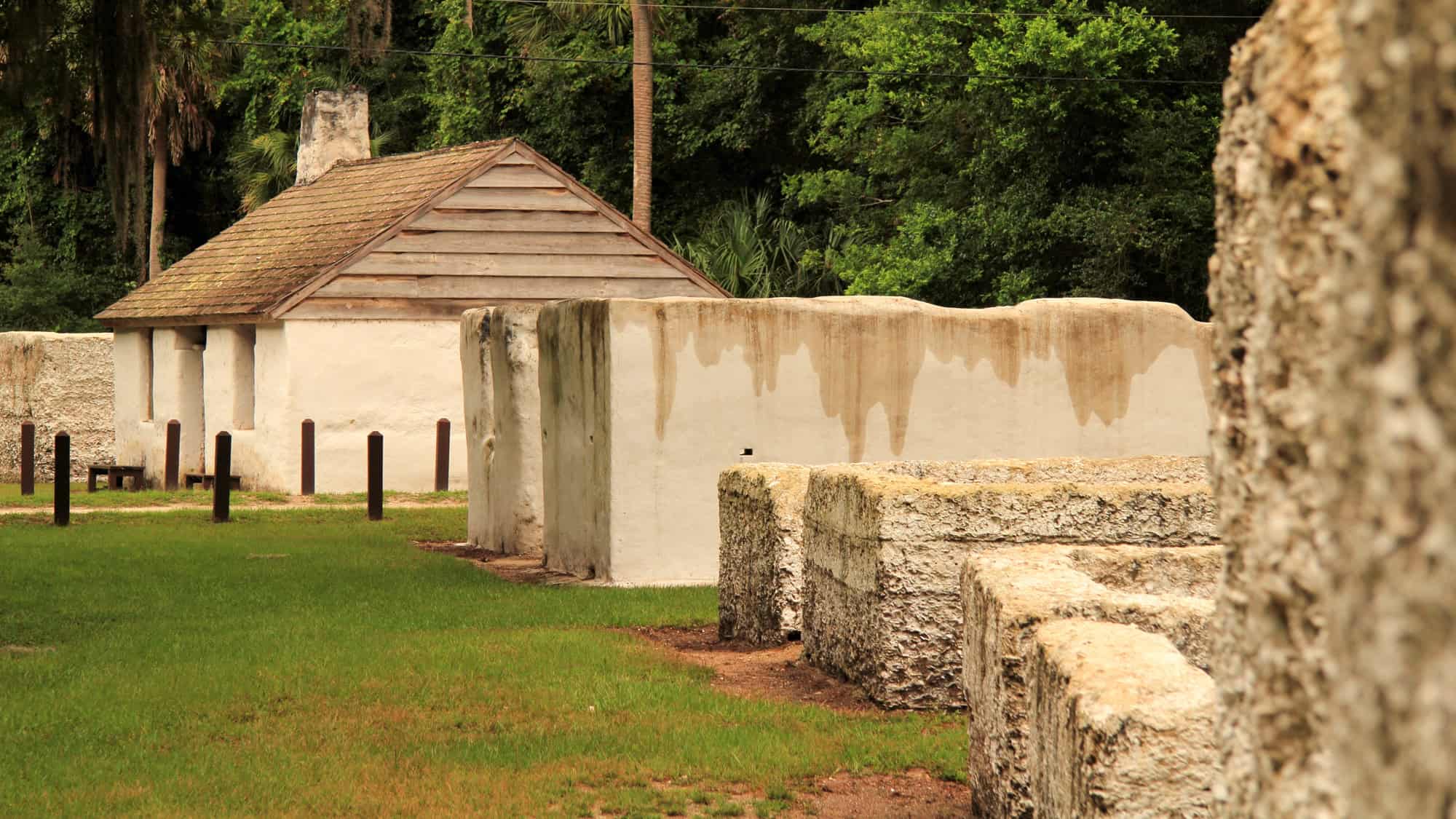
Turns out, Florida isn’t just about sandy beaches and retirees in golf carts. The Timucuan Ecological and Historic Preserve offers a glimpse into a world far older than your grandma’s photo albums. In fact, archaeologists have unearthed pottery here that’s approximately 4,500 years old. That’s older than Rome, older than fancy avocado toast trends, probably older than most of your opinions.
The preserve celebrates the indigenous Timucua people, who thrived in this region before Europeans arrived and started, well, rearranging things. Beyond the artifacts, the area is a mosaic of wetlands, salt marshes, and hardwood hammocks just begging to be explored (warning: it’s humid, bring water).
And if history isn’t really your thing, focus on the fact that this place feels like stepping onto the set of an epic nature documentary (with a side of old buildings).
Fort Caroline National Memorial
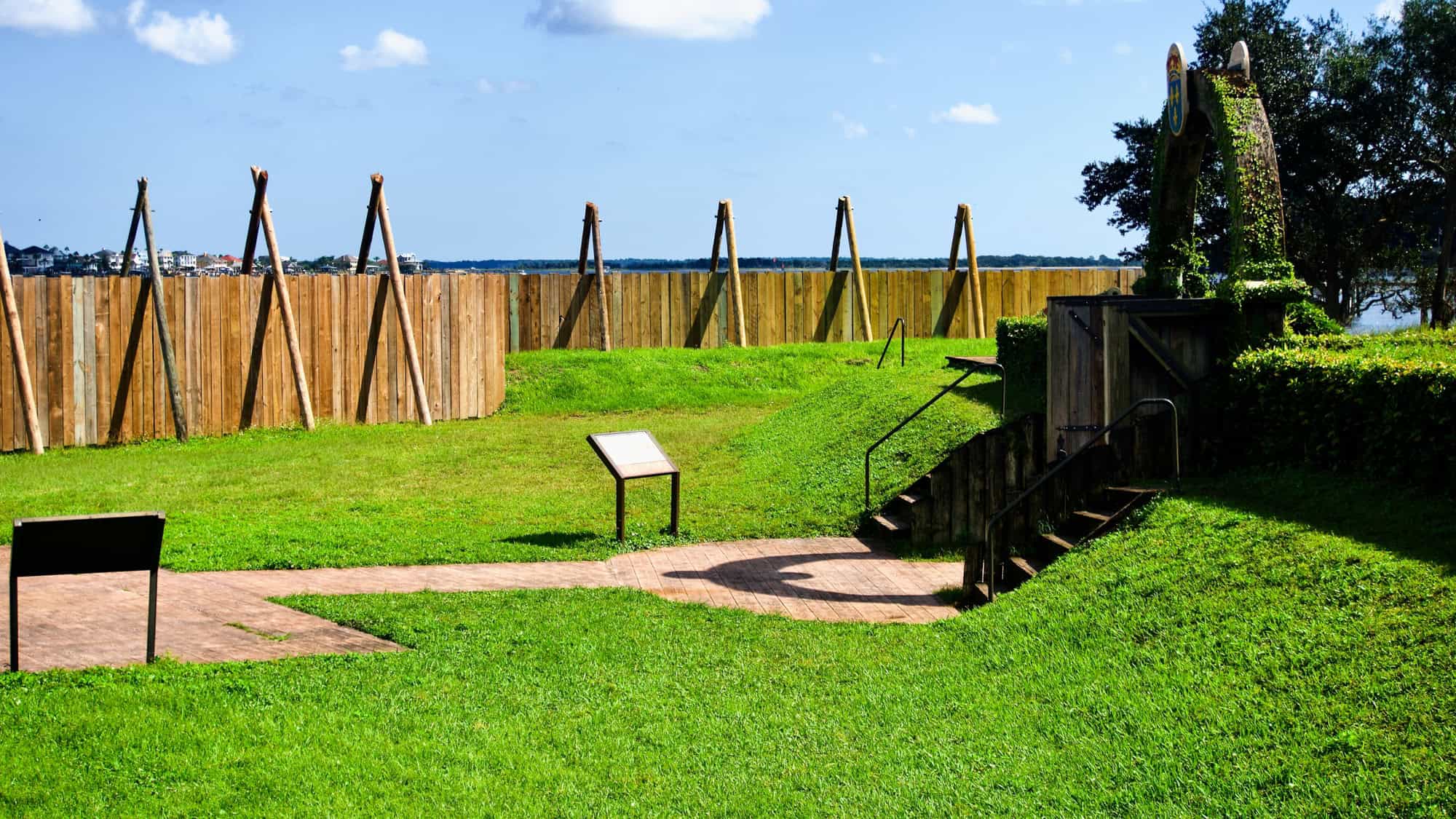
Situated in the Timucuan Preserve we just discussed, Fort Caroline isn’t your average monument. It’s more of a tribute to how the French once tried (and spectacularly failed) to colonize Florida in the 16th century.
Yep, they came, they built a fort, and then the Spanish promptly showed up and said, “No.” But hey, what remains is a fascinating peek into history. Stroll the grounds, check out the reconstructed riverside fort, and wave at the St. Johns River, which has seen its fair share of turmoil over the centuries.
It’s tranquil now, but once upon a time, this spot was the setting of European rivalries and Timucuan life intersecting. Think Game of Thrones but without the dragons (those mosquitoes might just be big enough, though). And probably less betrayal. Probably.
Like Our Content? Make sure to join our newsletter for all the latest on outdoor adventures (and a FREE STARGAZING GUIDE). Click here to sign up!

